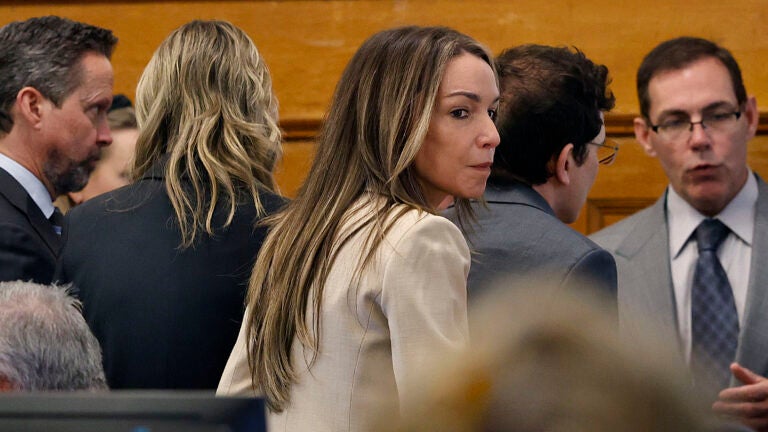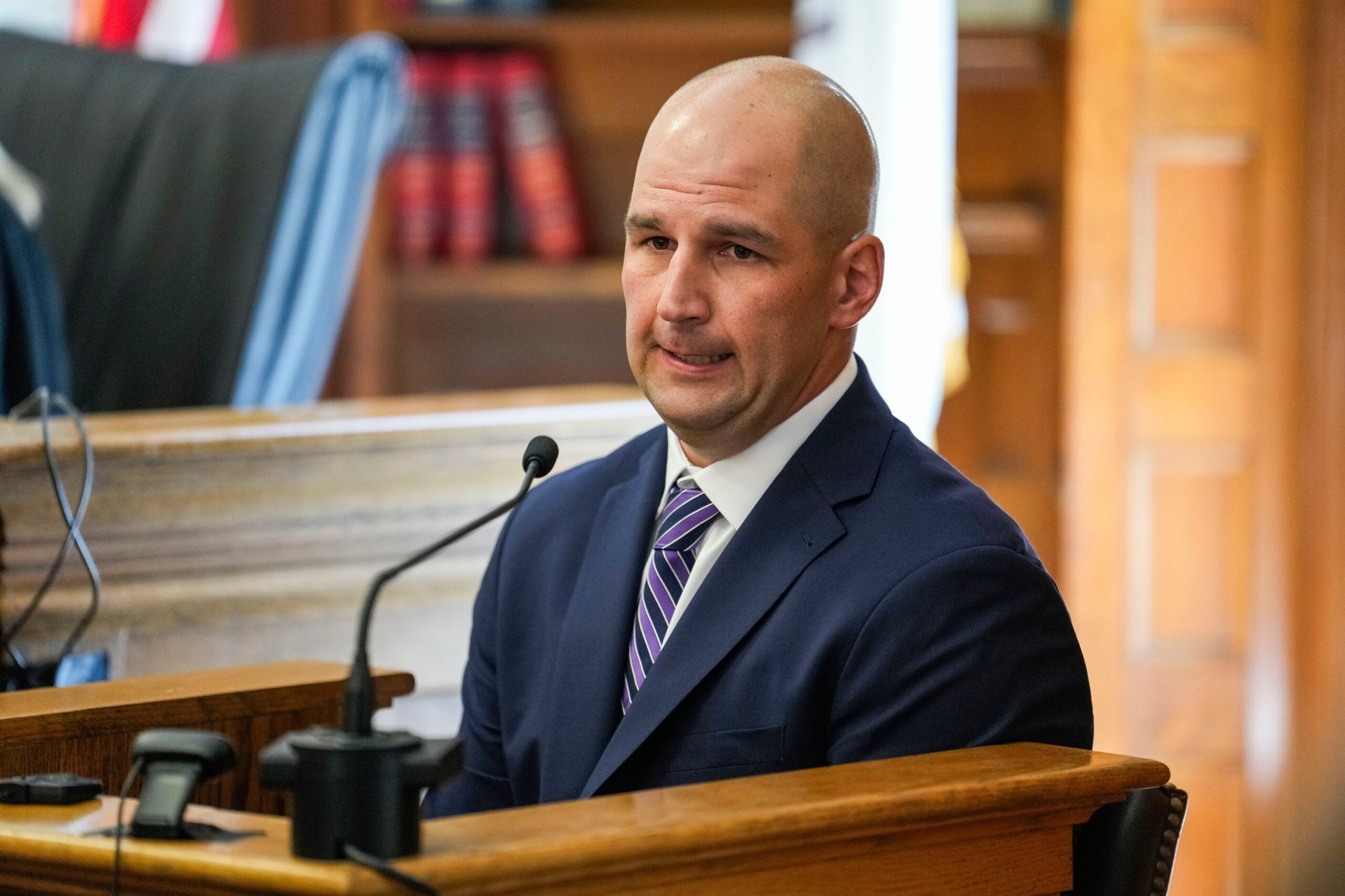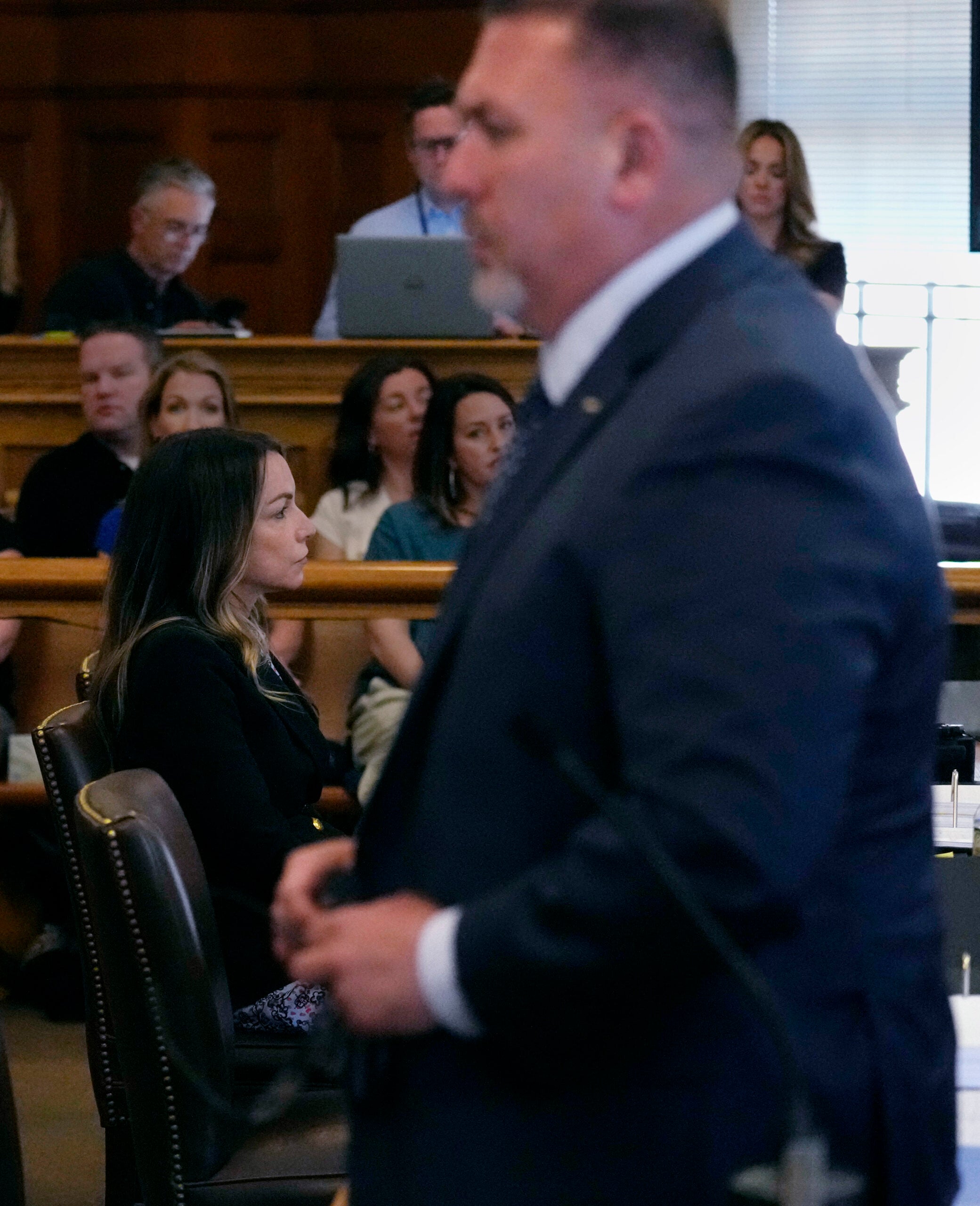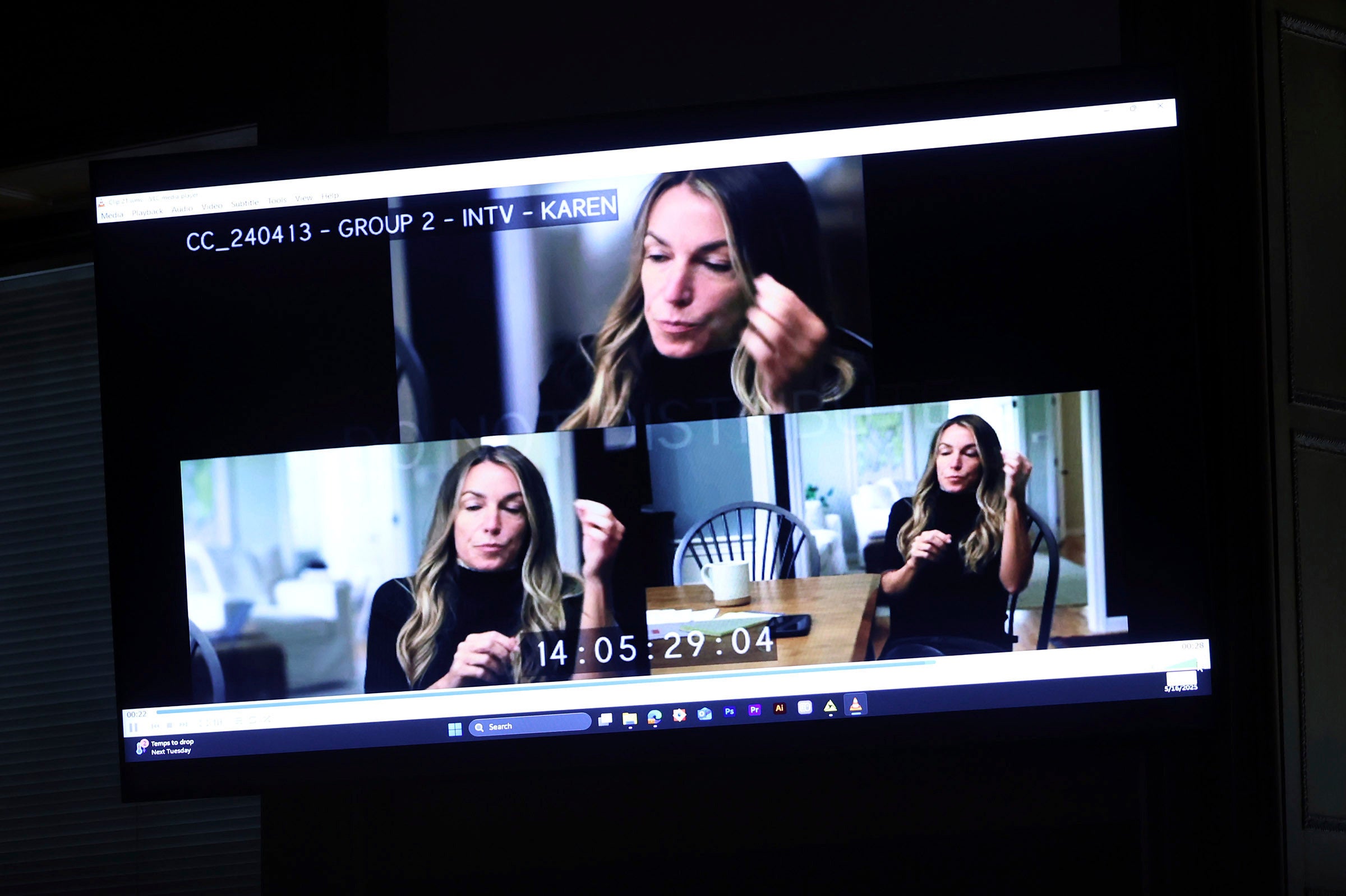Crime
“As it stands now, no competent defense counsel would call Mr. Proctor.”

While his lewd texts about Karen Read were splashed across headlines and read aloud to jurors, his name dominating more than one line of questioning, Michael Proctor notably did not take the stand in Read’s murder retrial.
According to legal experts, the former Massachusetts State Police trooper’s conspicuous absence was “highly unusual,” though likely strategic.
Prosecutors opted against calling Proctor, who was fired earlier this year in light of his conduct while leading the investigation into the death of Read’s boyfriend, Boston Police Officer John O’Keefe. And despite labeling Proctor a “cancer” and accusing him of “pre-selecting” Read and fabricating evidence, the defense didn’t have him testify, either.
“As it stands now, no competent defense counsel would call Mr. Proctor,” Jack Lu, a retired superior court judge, said in an interview before Read’s defense rested this week. “He has the ability to eviscerate the defense but without him they have a path to victory.”
Special prosecutor Hank Brennan relied on Proctor’s supervisor, Sgt. Yuriy Bukhenik, to bear the brunt of the testimony about the State Police investigation. Bukhenik glossed over and minimized Proctor’s role in the case at times, though he defended the former trooper’s investigation as one of “integrity.”
“It is highly unusual and unheard of for the prosecutor to not call the lead investigator at trial,” Lu explained in an email interview. “No one knows the reason, but one reason could be that it plays into the defense strategy. … It would allow the Proctor narrative to dominate the prosecution case-in-chief.”
On the flip side, he said, Proctor also had “the potential to ensure Ms. Read’s conviction.” Like Brennan, Read’s lawyers used a surrogate to touch on Proctor’s involvement without calling him to the stand. Proctor’s childhood friend, Jonathan Diamandis, confirmed he was included on a text chain with the ex-trooper and read some of Proctor’s messages aloud in court.
Daniel Medwed, a criminal law professor at Northeastern University, suggested prosecutors may have felt Proctor would be somewhat hostile to the defense and knew that if Read’s lawyers called Proctor, they “would have the benefit of seeing what he said on direct and using cross-examination either to rehabilitate him or to try to show how his behavior, as troubling as it was, did not damage the government case.”
Reflecting on the trial in an email interview before the defense rested, Medwed said Brennan adopted a “clinical” and “just the facts, ma’am” approach that put the focus on the forensic evidence and “did not require a lot of emphasis on the twists and turns of the police investigation.”
However, he also noted a case could be made for the approach taken by Assistant District Attorney Adam Lally during Read’s first trial last summer: get out ahead of the controversy and go on the offensive.
“In litigation, this is sometimes called ‘minimizing the sting’ — to take a proactive approach and grapple with bad facts or bad witnesses during your presentation rather than leaving it up to the other side,” Medwed explained.

Who else was missing?
In addition to Proctor, other notable absences on the witness stand were Brian Higgins, Brian Albert, and Colin Albert — the three men Read’s lawyers had previously alleged were somehow involved in O’Keefe’s death.
Prosecutors claim Read backed her SUV into O’Keefe in a drunken rage while dropping him off at Brian Albert’s Canton home for an afterparty early on Jan. 29, 2022, but Read’s lawyers contend O’Keefe was actually beaten inside 34 Fairview Road. Higgins and the Alberts were present at the home shortly after midnight on the 29th, though all three have denied seeing O’Keefe enter.

Read’s lawyers initially argued Colin Albert, Brian Albert’s nephew, had “bad blood” with O’Keefe, his former neighbor. However, Judge Beverly Cannone found no evidence to substantiate those claims and barred Read from trying to pin her boyfriend’s death on Colin Albert. Leading up to the retrial, the defense also suggested Higgins had motive to harm O’Keefe after Higgins exchanged flirty texts with Read, and that Brian Albert “had cause” to back Higgins up.
During Read’s retrial, however, the defense opted to instead focus its critique on the police investigation, rather than possible third-party culprits.
“This is a kitchen sink defense,” Lu explained. “Whatever defense is still viable at the beginning of [the] closing argument, you ride that horse to victory or defeat. I used it countless times as a defense lawyer many years ago, and I know it well.”
For one thing, Medwed pointed out, Cannone’s decision to limit Read’s third-party culprit defense signaled she might closely monitor what the defense team could introduce through Higgins and the Alberts.
“For another, Read’s team might have concluded that a straightforward ‘reasonable doubt’ defense might be more effective than trying to affirmatively show that someone else may have done it,” he added.
‘It may put her in prison’
One voice noticeably more present this time around? Read’s.
Though the defendant herself did not take the stand, Brennan interspersed his case with clips from Read’s various media interviews to give jurors a glimpse into her thoughts and conduct. In some of the clips, Read spoke about her alcohol consumption the evening of Jan. 28, 2022, and said she felt “buzzed” after drinking vodka tonics and “shouldn’t have been driving.” In other videos shown to jurors, Read remembered her initial speculation about whether she could have struck or “clipped” O’Keefe.
“Why on earth did Ms. Read make all those statements?” Lu wondered. “It may put her in prison.”
He called Brennan’s use of the clips “innovative,” adding, “in 40 plus years at the Massachusetts bar I have never seen this before. Broadly stated, the jury went from watching Netflix at home, to a trial presented using Netflix-techniques. It was fascinating to watch.”

According to Lu, Read’s team saw a procedural advantage during the first trial, given prosecutors were delayed in disclosing certain information until shortly before the trial and thus did not receive some reciprocal discovery until late in the game.
“Despite Mr. Brennan’s super human abilities, this undermines the idea that the difference between the two trials is Brennan versus Lally,” Lu explained.
Medwed likewise said Brennan’s use of Read’s interview clips was probably effective, “given that jurors might be naturally curious about Read as a person and that tactic allowed the prosecution to shape how she came across to the jury.”
What’s next?
But as Medwed pointed out, Friday’s closing arguments could play a large role as jurors begin to deliberate over Read’s fate.
“People often talk about the importance of first impressions and last impressions, or what scholars call ‘primacy’ and ‘recency,’ how people are ‘primed’ to view things a particular way early on and then tend to put outsized importance on the last thing they have heard or experienced,” he explained.
Medwed said he wants to keep an eye on the closing arguments, noting the vast amount of technical evidence the jury has received over the course of eight weeks.
“The manner in which the litigants package that information and convey it to the jury in summation could prove vital during deliberations,” he added.
And even without Proctor’s testimony, deliberating jurors will still be left to reckon with the ex-trooper’s role.
“At the end of the day, will the jury discount Proctor’s investigation of a person that he thinks is a murderer because Mr. Proctor is a flawed human being?” Lu wondered. “Or will they conclude that his aim was true?”
The latest on the Karen Read murder case
Sign up for our Extra newsletter to get updates from the retrial and other breaking news alerts delivered to your inbox.

